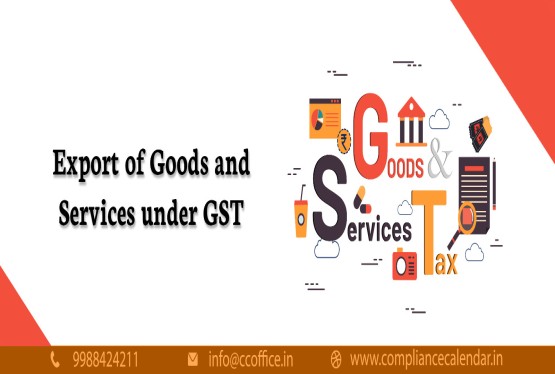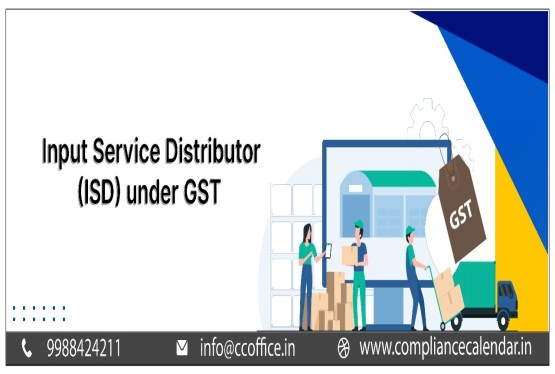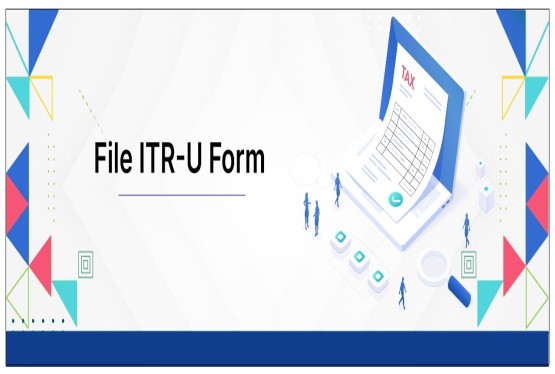Advance tax is a method of paying income tax in installments throughout the year, rather than in a lump sum at the end of the financial year. For business owners, grasping the concept of advance tax is essential for effective cash flow management and compliance with tax regulations. The process is simple and can be completed online, making it a convenient way to fulfill tax obligations. This article will explain what advance tax is, its advantages, how to calculate it, and the steps to make payments.
What is Advance Tax?
Advance tax refers to the income tax paid during the year as income is earned, instead of paying it all at once at the end of the financial year. If your total tax liability, after considering TDS (Tax Deducted at Source), is Rs. 10,000 or more, you are required to pay advance tax. Payments are made in installments based on due dates specified by the Income Tax Department.
Who Needs to Pay Advance Tax?
Advance tax applies to taxpayers whose annual tax liability meets certain criteria.
1. Taxpayers with a liability of Rs. 10,000 or more:
Any taxpayer—whether salaried, self-employed, or a business owner—must pay advance tax if their total tax liability for the financial year is Rs.10,000 or more.
2. Senior citizens (60 years or older):
Senior citizens without business income are exempt from paying advance tax. However, those with business income are required to pay it.
3. Businesses under the presumptive taxation scheme (Section 44AD):
Taxpayers under this scheme must pay their entire advance tax in one installment by March 15, with the option to pay by March 31.
4. Independent professionals (Section 44ADA):
Professionals like doctors, lawyers, and architects under the presumptive scheme must follow the same installment deadlines as businesses.
Benefits of Paying Advance Tax
Paying advance tax offers several financial and compliance benefits:
1. Improved cash flow management:
Spreading tax payments across the year helps businesses and individuals manage their finances more effectively.
2. Reduced interest liability:
Timely payments help avoid interest charges under Sections 234B and 234C of the Income Tax Act.
3. Avoids last-minute stress:
By paying taxes in installments, you can avoid the rush and stress of making a large payment at year-end.
4. Faster refund processing:
Timely payments ensure quicker processing of refunds for any overpaid taxes.
How to Calculate Advance Tax?
Step 1: Estimate Your Income
Calculate your total income for the financial year, including:
-
Interest from fixed deposits, savings accounts, etc.
-
Capital gains
-
Professional income
-
Rental income
-
Income of minors (if clubbed with your income)
-
Any other income sources
Step 2: Calculate Gross Taxable Income
Add your salary to the income estimated in Step 1.
Step 3: Determine Tax Payable
Apply the applicable income tax slabs to calculate the tax on your gross taxable income.
Step 4: Subtract TDS
Subtract any tax already deducted at source or expected to be deducted. If your net tax liability after accounting for TDS exceeds Rs. 10,000, you must pay advance tax in installments.
Example of Advance Tax Calculation
Let’s consider an example to understand the calculation. Assume an individual has the following income and opts for the old tax regime:
|
Components |
Amount (Rs.) |
|
Gross salary |
18,00,000 |
|
Standard deduction |
50,000 |
|
Net salary income |
17,50,000 |
|
Interest from fixed deposits |
50,000 |
|
Total income |
18,00,000 |
Applicable Section 80 Deductions
|
Deductions |
Amount (Rs.) |
|
Contributions to provident fund |
1,00,000 |
|
Medical insurance premium |
25,000 |
|
Total deductions |
1,25,000 |
Calculation of Taxable Income
|
Component |
Amount (Rs.) |
|
Total income |
18,00,000 |
|
Less: Deductions |
1,25,000 |
|
Taxable income |
16,75,000 |
Tax Payable Calculation
|
Income Slab |
Tax Rate |
Calculation |
Amount (Rs.) |
|
Up to Rs. 2,50,000 |
Exempt |
- |
0 |
|
Rs. 2,50,001 to Rs. 5,00,000 |
5% |
2,50,000 x 5% |
12,500 |
|
Rs. 5,00,001 to Rs. 10,00,000 |
20% |
5,00,000 x 20% |
1,00,000 |
|
Above Rs. 10,00,000 |
30% |
6,75,000 x 30% |
2,02,500 |
|
Health & Education Cess |
4% |
3,15,000 x 4% |
12,600 |
|
Total tax payable |
|
|
3,27,600 |
Assuming Rs. 1,50,000 is deducted as TDS on salary, the individual’s net tax payable as advance tax will be:
Advance Tax = Rs. 3,27,600 - Rs. 1,50,000 = Rs. 1,77,600
The individual must pay Rs. 1,77,600 as advance tax in four installments to comply with the Income Tax Act and avoid penalties.
Advance Tax Due Dates
The due dates and payment schedules vary depending on whether you are a company, a business owner, or a self-employed individual.
For Companies
|
Installment |
Due Date |
Tax Amount Payable |
|
1st Installment |
On or before June 15 |
15% of advance tax |
|
2nd Installment |
On or before September 15 |
45% of advance tax |
|
3rd Installment |
On or before December 15 |
75% of advance tax |
|
4th Installment |
On or before March 15 |
100% of advance tax |
For Business Owners and Self-Employed Individuals
|
Instalment |
Due Date |
Tax Amount Payable |
|
1st Instalment |
On or before September 15 |
30% of advance tax |
|
2nd Instalment |
On or before December 15 |
60% of advance tax |
|
3rd Instalment |
On or before March 15 |
100% of advance tax |
For Individuals Under Presumptive Taxation Scheme
Taxpayers under Sections 44AD (for small businesses) or 44ADA (for professionals) must pay 100% of their advance tax liability in a single installment by March 15.
Challan for Advance Tax Payment
To pay advance tax, taxpayers must use Challan 280, which is available both online and offline:
-
Online: Visit the official Income Tax Department portal to fill out and submit Challan 280.
-
Offline: Fill out the challan manually and pay the tax at designated bank branches.
By understanding and adhering to advance tax requirements, taxpayers can ensure compliance, avoid penalties, and manage their finances more effectively.
Tax Payable/Tax Refundable
Advance tax refers to the payment of taxes in four installments throughout the financial year, based on projected income. This system helps taxpayers avoid a large tax burden at the end of the year. After adjusting for advance tax, tax deducted at source (TDS), and tax collected at source (TCS), any remaining tax liability results in either tax payable or a tax refund.
Penalties for Non-Payment
Failure to pay advance tax on time incurs interest penalties under Sections 234B and 234C of the Income Tax Act. A penalty of 1% per month is charged as simple interest on the outstanding advance tax amount, emphasizing the importance of timely payments to prevent additional financial burdens.
How to Pay Advance Tax Online?
Paying advance tax online is a simple process. Follow these steps:
1. Visit the official Income Tax Department website.
2. Select the ‘e-pay’ option under the Quick Links tab.
3. Enter your PAN and mobile number, then click ‘continue’.
4. Enter the OTP sent to your registered mobile number and proceed.
5. Select ‘Income Tax’ and provide details such as assessment year, contact information, and bank details.
6. The system will redirect you to a payment gateway—complete the payment by entering the necessary details.
7. After successful payment, a confirmation and challan number will be generated for record-keeping.
FAQs
Q1. What is advance tax, and who needs to pay it?
Ans. Advance tax is the payment of income tax in installments during the financial year as income is earned, rather than in a lump sum at year-end. It applies to individuals, businesses, and professionals whose total tax liability, after deducting TDS, is Rs. 10,000 or more. Senior citizens without business income are exempt, but those with business income must pay advance tax.
Q2. What are the due dates for paying advance tax?
Ans. The due dates for advance tax payments vary based on the taxpayer's category:
-
Companies: 15% by June 15, 45% by September 15, 75% by December 15, and 100% by March 15.
-
Business Owners/Self-Employed Individuals: 30% by September 15, 60% by December 15, and 100% by March 15.
-
Presumptive Taxation Scheme (Section 44AD/44ADA): 100% by March 15.
Q3. How is advance tax calculated?
Ans. To calculate advance tax:
1. Estimate your total income for the year, including salary, interest, capital gains, and other sources.
2. Deduct applicable exemptions and deductions under Sections 80C, 80D, etc.
3. Apply the relevant tax slabs to compute the tax liability.
4. Subtract TDS to determine the advance tax payable. If the amount is Rs. 10,000 or more, pay it in installments as per due dates.
Q4. What are the penalties for not paying advance tax on time?
Ans. Late or non-payment of advance tax attracts interest under Sections 234B and 234C of the Income Tax Act:
-
Section 234B: 1% per month on unpaid advance tax.
-
Section 234C: Interest for deferment of installments. Timely payments help avoid these penalties.
Q5. Can I pay advance tax online?
Ans. Yes, advance tax can be paid online through the Income Tax Department’s portal:
1. Visit the official website and select ‘e-pay’ under Quick Links.
2. Enter your PAN, mobile number, and OTP.
3. Choose ‘Income Tax’ and provide details like assessment year and bank information.
4. Complete the payment via the payment gateway and save the challan number for records.
Q6. What are the benefits of paying advance tax?
Ans. Paying advance tax offers several advantages:
-
Better Cash Flow Management: Spreading tax payments avoids a large financial burden at year-end.
-
Reduced Interest Liability: Timely payments prevent interest charges under Sections 234B and 234C.
-
Avoids Last-Minute Stress: Installments ensure compliance without year-end pressure.
-
Faster Refunds: Timely payments facilitate quicker processing of tax refunds, if applicable.









_crop10_thumb.jpg)

















































































_for_FY_2025-26_crop10_thumb.jpg)












_learn_crop10_thumb.jpg)








_Filing_Due_Dates_for_FY_2024-25_learn_crop10_thumb.jpeg)










